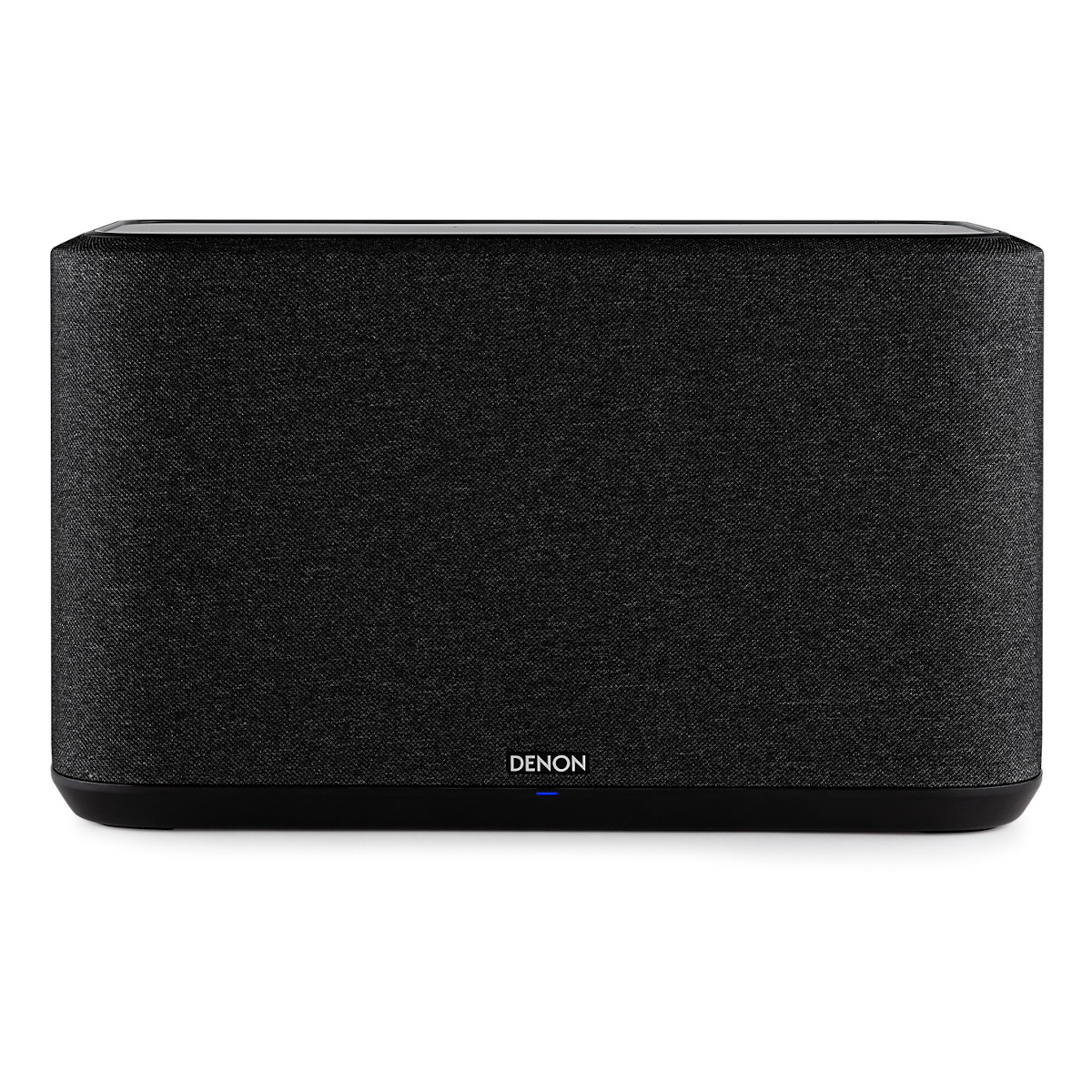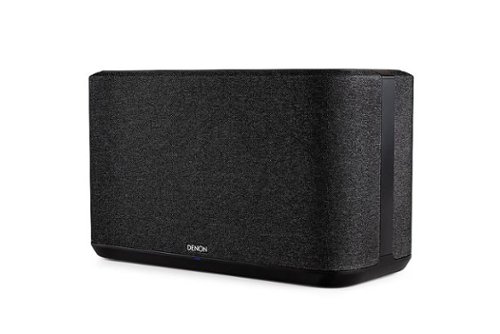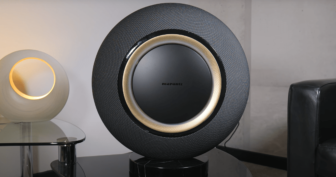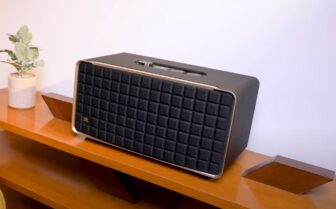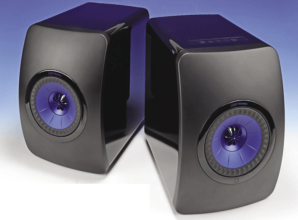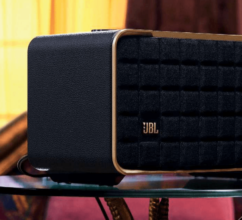Denon Home 350 Review
Denon’s largest streaming box, Denon Home 350 is quite a beast, weighing 6.3 kilos and measuring 38 cm in width. Despite its size, it doesn’t feel intrusive and particularly shines in the bass department.
We all know the scenario: you want to listen to music, but there’s no stereo system in the fireplace room, library, or, heaven forbid, the entire west wing of the house! What to do? Well, a Wi-Fi speaker can be easily moved and plugged in, and then you can enjoy music while playing billiards or relaxing in the sauna…
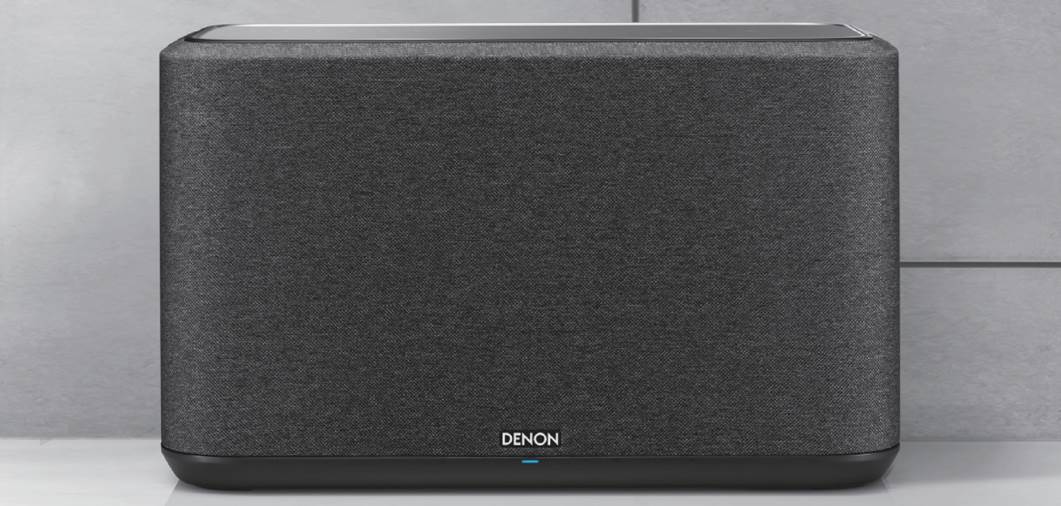
This is also possible with Denon’s Home 350, though considering its nearly six kilos, you might think twice about moving it around. It’s not really designed for home mobility; for that, there are its smaller siblings (Home 250 and Home 150).
The heavyweights among streaming speakers (including the Sonos Five and Harman Citation 500) offer different advantages. With the Home 350, the clear standout is its astonishing bass. But first, it needs to be connected to your home network. This requires the HEOS app (free for iOS and Android). The installation is quick, and before you know it, music is playing. The simplest way is via Aux-In, Bluetooth, or USB stick. Plenty of streaming services are available (subscription required), and although I miss the French service Qobuz, Tidal, Spotify, Deezer, and Amazon Prime Music are all present. Additional options include TuneIn internet radio, Napster, and SoundCloud.
Using the box via the app is smooth, and you can adjust the volume, pause playback, and skip tracks (double-tap play/pause for forward, triple-tap for backward) on the well-crafted Home 350’s touch display.

Generous Equipment
The sound is driven by six drivers: two 19-mm tweeters, two 50-mm midrange drivers, and two 165-mm woofers (one facing forward, one backward). This setup provides stereo sound, though the stereo effect isn’t overwhelming, which is to be expected.
For a more immersive experience, you can pair two Home 350 units for stereo sound. Multiroom functionality is also available, allowing existing Home speakers to play different or the same music. Additionally, Denon devices can be controlled via Echo or Alexa if you have Amazon devices at home.
Whether it’s essential for a Wi-Fi speaker to play HiRes audio is debatable. Nonetheless, the Home 350 can handle it. It supports ALAC, FLAC, and WAV files up to 192 kHz/24 bit, as well as DSD at 2.8 MHz and 5.6 MHz from USB storage or streaming from Amazon Music HD and TIDAL.
The Lab Report
Measurements confirm the listening experience: the -3 dB point is at 30 Hz, and at -6 dB it’s 28 Hz. This is impressive given the enclosure volume, made possible by limiters. The Home 350 produces 83 dB of undistorted sound with full bass. For those who want even louder sound (why would you?), it can go over 90 dB, but with reduced deep bass.
Power consumption is 11 watts, which is reasonable if you put the device in standby mode when not in use. To do this, press the play/pause button on the device for five seconds. The LED goes off, and power consumption drops to the EU standard (0.4W). If you leave the device on, expecting it to shut off without a signal, it will continuously consume eleven watts, making the base and surface quite warm…
The app allows users to adjust the placement (near-wall, free-standing, or corner) and the levels of bass and treble. We made extensive use of the equalizer. In the factory setting, the box is too bass-heavy and a bit dull. With a touch more treble, significantly less bass, and the tweeters aimed at the ears, everything was perfect! The joy of playing is immense, the resolution and clarity are astonishing, and the bass is, well, simply awesome.
We highly recommend the Home 350 for anyone seeking good, voluminous sound that doesn’t need to be portable.
Six drivers ensure the great sound of the Home 350. The touch surface offers basic functions (play, pause, volume, skip) and six preset buttons for radio stations (TuneIn) or Spotify playlists.
Specs
Inputs: Ethernet, Wi-Fi (dual-band), USB-A, minijack analogue in, Apple AirPlay 2, HEOS, Bluetooth (SBC)
Drivers: 2 x 19mm tweeter; 2 x 50mm; 2 x 165mm woofer (one front, one rear)
Amplifier power output: 6 x Class D, no specs
Dimensions (hwd): 380 x 225 x 180mm
Weight: 6.3kg
Contact: QualiFi
Telephone: 03 8542 1110
Web: www.denon.com.au

